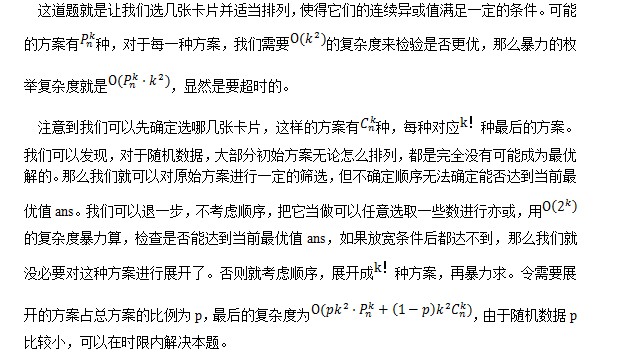本文主要是介绍D. DZY Loves Modification,希望对大家解决编程问题提供一定的参考价值,需要的开发者们随着小编来一起学习吧!
As we know, DZY loves playing games. One day DZY decided to play with a n × m matrix. To be more precise, he decided to modify the matrix with exactly k operations.
Each modification is one of the following:
- Pick some row of the matrix and decrease each element of the row by p. This operation brings to DZY the value of pleasure equal to the sum of elements of the row before the decreasing.
- Pick some column of the matrix and decrease each element of the column by p. This operation brings to DZY the value of pleasure equal to the sum of elements of the column before the decreasing.
DZY wants to know: what is the largest total value of pleasure he could get after performing exactly k modifications? Please, help him to calculate this value.
The first line contains four space-separated integers n, m, k and p (1 ≤ n, m ≤ 103; 1 ≤ k ≤ 106; 1 ≤ p ≤ 100).
Then n lines follow. Each of them contains m integers representing aij (1 ≤ aij ≤ 103) — the elements of the current row of the matrix.
Output a single integer — the maximum possible total pleasure value DZY could get.
2 2 2 2 1 3 2 4
11
2 2 5 2 1 3 2 4
11
For the first sample test, we can modify: column 2, row 2. After that the matrix becomes:
1 1 0 0
For the second sample test, we can modify: column 2, row 2, row 1, column 1, column 2. After that the matrix becomes:
-3 -3 -2 -2
文章大意是给你一个n * m的矩阵,你可以进行k次操作.
操作1:把一行的每个元素都减去p,你可以获得该行所有元素和(操作之前)的pleasure
操作2:把一列的每个元素都减去p,你可以获得该列所有元素和(操作之前)的pleasure
问你最大可以获得的pleasure是多少
思路:枚举操作1所进行的次数,每次取能获得最大的行,用优先队列维护,要注意预处理,否则会超时
#include<iostream>
#include<cstdio>
#include<algorithm>
#include<cstring>
#include<queue>
typedef long long LL;
using namespace std;
int A[1005][1005];
LL R[1005],C[1005];
LL s1[1000005],s2[1000005];
void get_C(int n,int i,int (*A) [1005])
{LL s=0;for(int j=1;j<=n;j++)s+=A[j][i];C[i]=s;
}
void get_R(int m,int i,int (*A)[1005])
{LL s=0;for(int j=1;j<=m;j++)s+=A[i][j];R[i]=s;
}
int main()
{int n,m,k,p;while(scanf("%d%d%d%d",&n,&m,&k,&p)==4){LL s=0;s1[0]=s2[0]=0;for(int i=1;i<=n;i++)for(int j=1;j<=m;j++)scanf("%d",&A[i][j]);LL sum=-1000000000000009;priority_queue<LL>q1;priority_queue<LL>q2;for(int i=1;i<=n;i++){get_R(m,i,A);q1.push(R[i]);}for(int i=1;i<=m;i++){get_C(n,i,A);q2.push(C[i]);}for(int j=1;j<=k;j++){LL temp=q1.top();q1.pop();s1[j]=s1[j-1]+temp;temp-=p*m;q1.push(temp);}for(int j=1;j<=k;j++){LL temp=q2.top();q2.pop();s2[j]=s2[j-1]+temp;temp-=p*n;q2.push(temp);}for(int i=0;i<=k;i++){s=s1[i]+s2[k-i];sum=max(sum,s-LL(i)*p*(k-i));}printf("%I64d\n",sum);}return 0;
}
这篇关于D. DZY Loves Modification的文章就介绍到这儿,希望我们推荐的文章对编程师们有所帮助!



